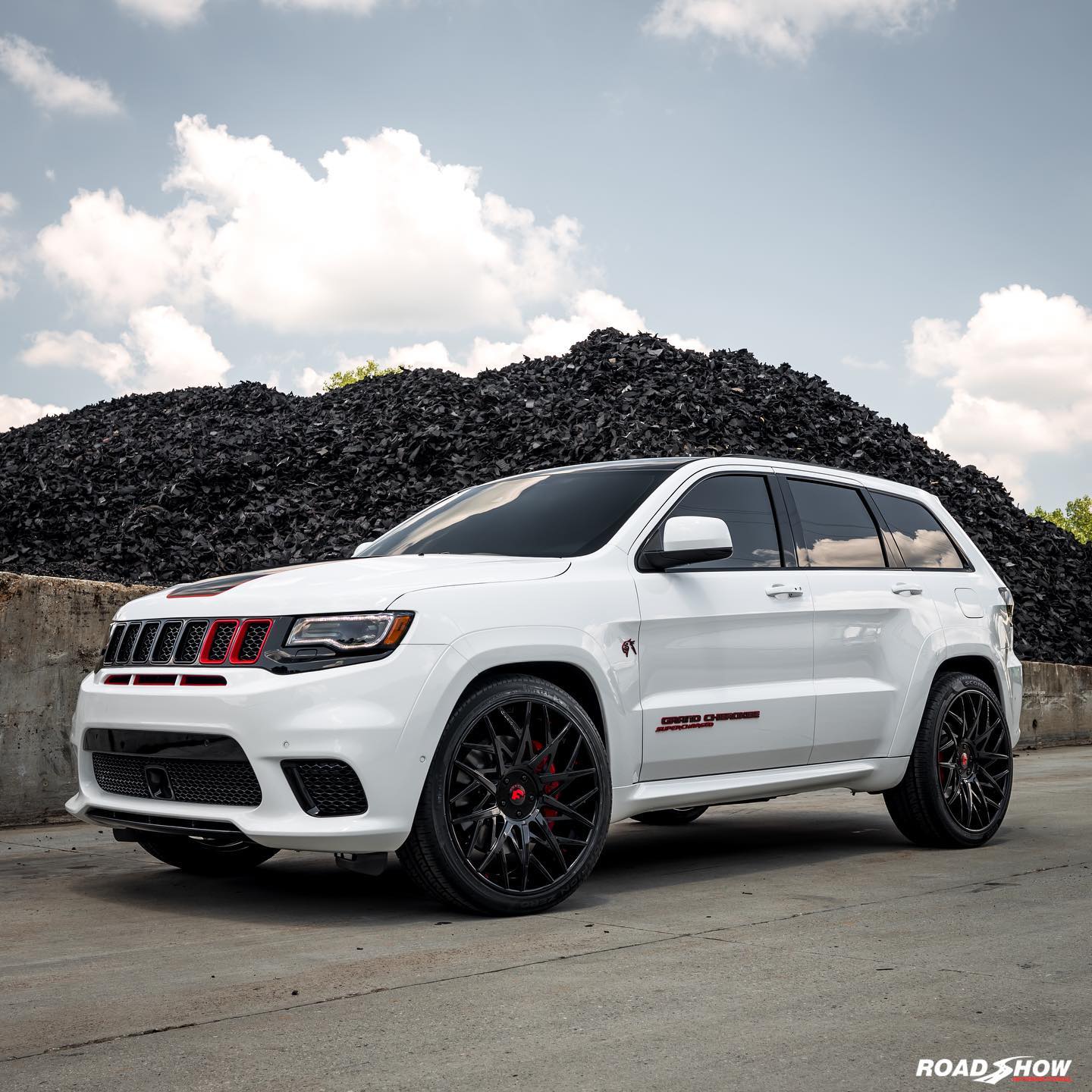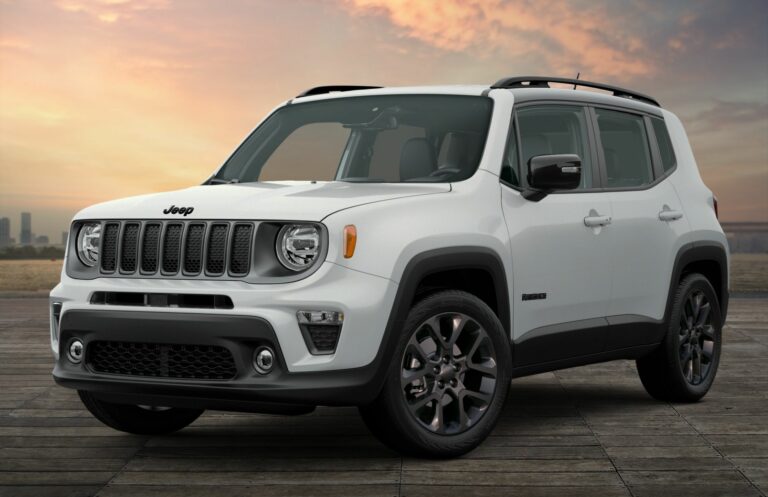Jeep Liberty 3.7 Engine For Sale: A Comprehensive Guide to Revitalizing Your Ride
Jeep Liberty 3.7 Engine For Sale: A Comprehensive Guide to Revitalizing Your Ride /jeeps.truckstrend.com
The Jeep Liberty, a compact SUV produced by Chrysler from 2002 to 2012, earned a loyal following for its rugged capabilities and distinctive design. At the heart of many of these vehicles, particularly the popular KJ (2002-2007) and KK (2008-2012) generations, lies the venerable 3.7-liter PowerTech V6 engine. While generally robust, like any mechanical component, these engines eventually reach the end of their service life due to high mileage, neglect, or specific component failures. For many Liberty owners, finding a reliable "Jeep Liberty 3.7 Engine For Sale" isn’t just about a repair; it’s about extending the life of a cherished vehicle, avoiding the expense of a new car, and preserving its off-road spirit. This comprehensive guide will delve into everything you need to know about sourcing, buying, and installing a replacement 3.7-liter engine for your Jeep Liberty.
Understanding the Jeep Liberty 3.7L PowerTech Engine
Jeep Liberty 3.7 Engine For Sale: A Comprehensive Guide to Revitalizing Your Ride
The 3.7-liter PowerTech V6 engine is a single overhead camshaft (SOHC) 12-valve engine that became a staple across various Chrysler, Dodge, and Jeep models. In the Jeep Liberty, it typically produced around 210 horsepower and a healthy amount of torque, making it well-suited for both daily driving and light off-road adventures. Its widespread use in vehicles like the Jeep Grand Cherokee, Commander, Dodge Dakota, and Ram 1500 means that parts and expertise are relatively common.
While generally considered a durable engine, the 3.7L PowerTech is known for a few common issues that often lead to the need for a replacement:
- Overheating: If not properly maintained, the cooling system can fail, leading to warped cylinder heads or blown head gaskets.
- Oil Sludge: Irregular oil changes or the use of incorrect oil can lead to sludge buildup, restricting oil flow and causing premature wear on internal components, particularly the valvetrain and bearings.
- Timing Chain Issues: While less common than in some other engines, high mileage can lead to timing chain stretch, resulting in noise and potential engine damage if not addressed.
- Cylinder Head Problems: Some engines experienced issues with valve seats or guides, particularly in early models, leading to misfires or loss of compression.

Why Consider a Replacement 3.7L Engine?
The decision to replace an engine can seem daunting, but for many Jeep Liberty owners, it’s a highly practical and cost-effective solution. Here’s why:
- Cost-Effectiveness: A new vehicle purchase involves significant depreciation, higher insurance costs, and often a larger financial outlay upfront. Replacing an engine is typically a fraction of the cost of a new or even a well-used replacement vehicle.
- Extending Vehicle Life: A healthy engine can give your Liberty many more years of reliable service, allowing you to continue enjoying its utility and capabilities.
- Familiarity and Sentimental Value: If you love your Jeep Liberty and are comfortable with its quirks, replacing the engine allows you to keep a vehicle you know and trust, often one with sentimental value.
- Known Vehicle History: You know the maintenance history and condition of the rest of your vehicle (transmission, suspension, body), unlike buying a used car with an unknown past.

Types of Jeep Liberty 3.7L Engines Available for Sale
When searching for a replacement 3.7L engine, you’ll encounter a few main categories, each with its own pros and cons:

-
Used Engines:
- Description: These are engines pulled from salvage vehicles, often due to collision damage rather than engine failure.
- Pros: Generally the most affordable option. Can be a good value if sourced carefully.
- Cons: Higher risk. Mileage and maintenance history are often unknown. No guarantee of internal condition. Limited warranties, if any.
- What to Look For: Low mileage (under 100,000 miles is ideal), evidence of regular oil changes (no excessive sludge under the oil cap), no signs of major leaks or external damage. Ask for a video of the engine running before removal if possible.
-
Remanufactured/Rebuilt Engines:
- Description: These engines have been disassembled, inspected, cleaned, and had worn or damaged components replaced with new or re-machined parts (e.g., new pistons, rings, bearings, gaskets, seals, valve guides). They are then reassembled to OEM specifications and tested.
- Pros: Excellent balance of cost and reliability. Come with comprehensive warranties (often 1-3 years or 12,000-36,000 miles). All critical wear items are new.
- Cons: More expensive than used engines. Requires a core return (your old engine).
- What to Look For: Reputable rebuilder, clear warranty terms, confirmation of what new parts are included, and what testing procedures are performed.
-
New Crate Engines:
- Description: These are brand-new engines, often direct from the original manufacturer (OEM) or an authorized supplier.
- Pros: Highest reliability and longest lifespan. Full factory warranty. No core return required.
- Cons: Rarest and most expensive option for a discontinued engine like the 3.7L. May be difficult to find directly from Stellantis (formerly Chrysler).
Where to Buy a Jeep Liberty 3.7 Engine
Several avenues exist for purchasing a replacement 3.7L engine:
- Online Engine Suppliers: Companies like Powertrain Products, S&J Engines, and others specialize in selling remanufactured and used engines with warranties. They often have vast inventories and shipping capabilities.
- Salvage Yards/Junkyards: Local and national salvage yards (e.g., via Car-Part.com) are excellent sources for used engines. You can often inspect the engine in person.
- Online Marketplaces: eBay Motors, Craigslist, and Facebook Marketplace can list engines from individuals or smaller shops. Exercise extreme caution and verify sellers’ reputations.
- Specialized Automotive Repair Shops: Some independent shops that specialize in engine repair or specific vehicle brands may have connections to suppliers or offer in-house rebuilt engines.
- Dealerships: While less common for replacement engines, some dealerships might offer remanufactured units, though typically at a premium.
Important Considerations Before Purchase
Before you commit to buying a "Jeep Liberty 3.7 Engine For Sale," take these crucial factors into account:
- Compatibility (Year and VIN): While the 3.7L engine was used across many years and models, there can be subtle differences in sensor locations, wiring harnesses, and accessory mounts. Always verify compatibility using your vehicle’s VIN (Vehicle Identification Number) and the engine’s donor vehicle information. Specify if you need a KJ (2002-2007) or KK (2008-2012) compatible engine, as there might be minor variations.
- Warranty: This is paramount, especially for used or remanufactured engines. Understand what the warranty covers (parts only, or parts and labor?), its duration, and any conditions (e.g., professional installation required, specific fluids used).
- Shipping and Logistics: Engines are heavy and require freight shipping. Factor in shipping costs, delivery time, and how you will get the engine from the delivery truck to your garage or shop.
- Installation: Decide whether you’ll undertake the engine swap yourself (only recommended for experienced mechanics with proper tools) or hire a professional shop. Get quotes for labor before purchasing the engine.
- Block Type (Long Block vs. Short Block vs. Complete Drop-in):
- Long Block: The most common option. Includes the engine block, crankshaft, pistons, connecting rods, cylinder heads, valvetrain, oil pan, and timing cover. You’ll typically transfer your intake manifold, exhaust manifolds, accessories (alternator, power steering pump, AC compressor), and wiring harness.
- Short Block: Includes only the block, crankshaft, pistons, and rods. Requires transferring everything else, including cylinder heads, which adds to labor and potential cost if your heads are damaged.
- Complete Drop-in: A long block with many of the accessories, intake manifold, and sometimes even the exhaust manifold already attached. Most expensive but can save on labor and parts transfer.
- Core Charge: For remanufactured engines, you will almost certainly pay a core charge, which is refunded when you return your old engine. Ensure your old engine is complete and not severely damaged (e.g., a hole in the block) to get your core refund.
- Inspection (for Used Engines): If buying locally, inspect the engine thoroughly. Check for cracks, signs of overheating (discoloration), sludge under the oil cap, and rotate the crankshaft manually (if possible) to check for seizing.
Tips for a Successful Engine Swap
- Thorough Research: Don’t rush the purchase. Compare prices, warranties, and supplier reputations. Read reviews.
- Budget Beyond the Engine: Account for new fluids (oil, coolant, power steering, transmission fluid if applicable), filters (oil, air), spark plugs, engine mounts, belts, hoses, and possibly a new water pump, thermostat, and radiator, as these are often easier to replace during an engine swap.
- Professional Installation: Unless you are a highly experienced mechanic with specialized tools, professional installation is strongly recommended. Engine swaps are complex and require precision.
- Break-in Procedure: Follow the engine supplier’s recommended break-in procedure (for remanufactured or new engines) to ensure proper ring seating and longevity. This usually involves varying RPMs, avoiding heavy loads, and an early oil change.
- Diagnose the Original Failure: Ensure you understand why your original engine failed. Address any underlying issues (e.g., persistent overheating, faulty sensors) before installing the new engine to prevent a repeat failure.
Potential Challenges and Solutions
- Finding a Reliable Supplier: The market is flooded with options. Stick to well-reviewed, established companies with clear warranty policies. Check the Better Business Bureau (BBB) and online forums.
- Hidden Issues in Used Engines: Even a seemingly good used engine can have internal wear. This is the primary reason why remanufactured engines, with their warranties, are often a safer bet for long-term reliability.
- Installation Complexities: Engine swaps are labor-intensive. Ensure your chosen mechanic is experienced with Jeep Liberty 3.7L engines.
- Cost Overruns: Unexpected issues can arise during an engine swap. Build a contingency into your budget for unforeseen parts or labor.
Price Table: Estimated Costs for Jeep Liberty 3.7 Engine For Sale
Please note: Prices are highly variable based on supplier, mileage (for used), included accessories, and market demand. These are estimated ranges and do not include shipping or installation labor.
| Engine Type | Block Type | Estimated Price Range (USD) | Typical Warranty | Notes |
|---|---|---|---|---|
| Used Engine | Long Block | $800 – $2,000 | 30-90 days (parts only) | Price depends heavily on mileage, condition, and supplier. Higher risk. Often requires core return. |
| Remanufactured | Long Block | $2,000 – $3,500 | 1-3 years / 12,000-36,000 miles | Best balance of cost and reliability. Most common and recommended option. Requires core return (core charge usually $300-$700, refunded upon return of old engine). |
| Remanufactured | Short Block | $1,500 – $2,500 | 1-3 years / 12,000-36,000 miles | Requires transferring your existing cylinder heads and valvetrain. Cost-effective if your heads are confirmed good. Requires core return. |
| New Crate | Long Block | $4,000 – $6,000+ | 3-5 years / 50,000-100,000 miles | Rarest option for this engine, likely from a specialized builder or old stock. Highest cost, highest reliability. May not always be available. No core return usually. |
| Complete Drop-in | Long Block w/ Acc. | $3,000 – $4,500 | Varies by supplier (1-3 years) | Includes intake, exhaust manifolds, sometimes accessories. Saves on labor. Often a remanufactured unit. Requires core return. |
Note on Installation Costs: Professional engine swap labor can range from $1,000 to $2,500+, depending on the shop’s rates, complexity, and whether ancillary parts (like new motor mounts, belts, hoses) are replaced. Always get a detailed quote.
Frequently Asked Questions (FAQ) about Jeep Liberty 3.7 Engines
Q1: Is it worth replacing the engine in my Jeep Liberty?
A1: For many, yes. If the rest of your Liberty (transmission, frame, body) is in good condition, replacing the engine is significantly cheaper than buying a new vehicle and extends the life of a vehicle you already own and are familiar with.
Q2: How long do Jeep Liberty 3.7L engines typically last?
A2: With proper maintenance, a 3.7L engine can easily last 150,000 to 200,000 miles or more. Neglect, especially regarding oil changes and cooling system maintenance, can drastically reduce its lifespan.
Q3: What’s the main difference between a used and a remanufactured engine?
A3: A used engine is simply pulled from another vehicle and sold as-is, with unknown internal condition. A remanufactured engine has been completely disassembled, inspected, had worn components replaced with new ones, and reassembled to factory specifications, offering much higher reliability and a warranty.
Q4: What should I ask an engine supplier before buying?
A4: Ask about the engine’s mileage (for used), the specific year and model it came from, the warranty terms (duration, coverage, conditions), whether it’s a long block or short block, what accessories (if any) are included, the core charge policy, and shipping costs/timeline.
Q5: Can I install a 3.7L engine myself?
A5: An engine swap is a complex procedure requiring specialized tools, significant mechanical knowledge, and often a vehicle lift. While possible for highly experienced DIY mechanics, it’s generally recommended to have it professionally installed to ensure proper function and validate the engine’s warranty.
Q6: What are the most common problems with the 3.7L engine that lead to replacement?
A6: Common issues include overheating (leading to head gasket or cylinder head failure), oil sludge buildup (due to neglected oil changes), and in some cases, timing chain wear at very high mileages.
Conclusion
The "Jeep Liberty 3.7 Engine For Sale" market offers a vital lifeline for owners looking to keep their beloved SUVs on the road. Whether you opt for a budget-friendly used engine or invest in the reliability of a remanufactured unit, understanding the various options, their associated risks, and the critical considerations before purchase is key to a successful outcome. By making an informed decision and ensuring proper installation, you can breathe new life into your Jeep Liberty, allowing it to continue its journey, whether on the highway or venturing off the beaten path, for many years to come.






